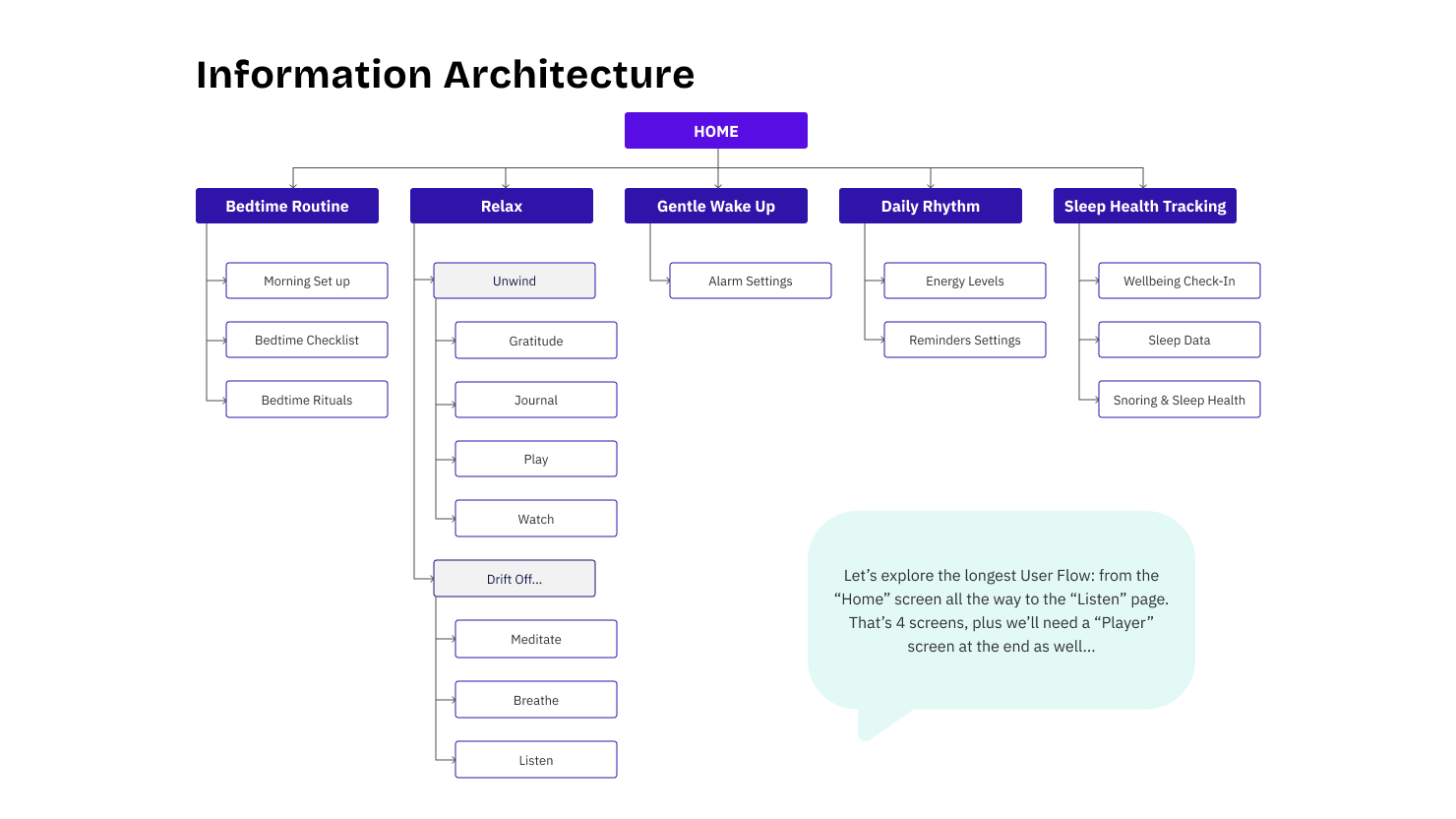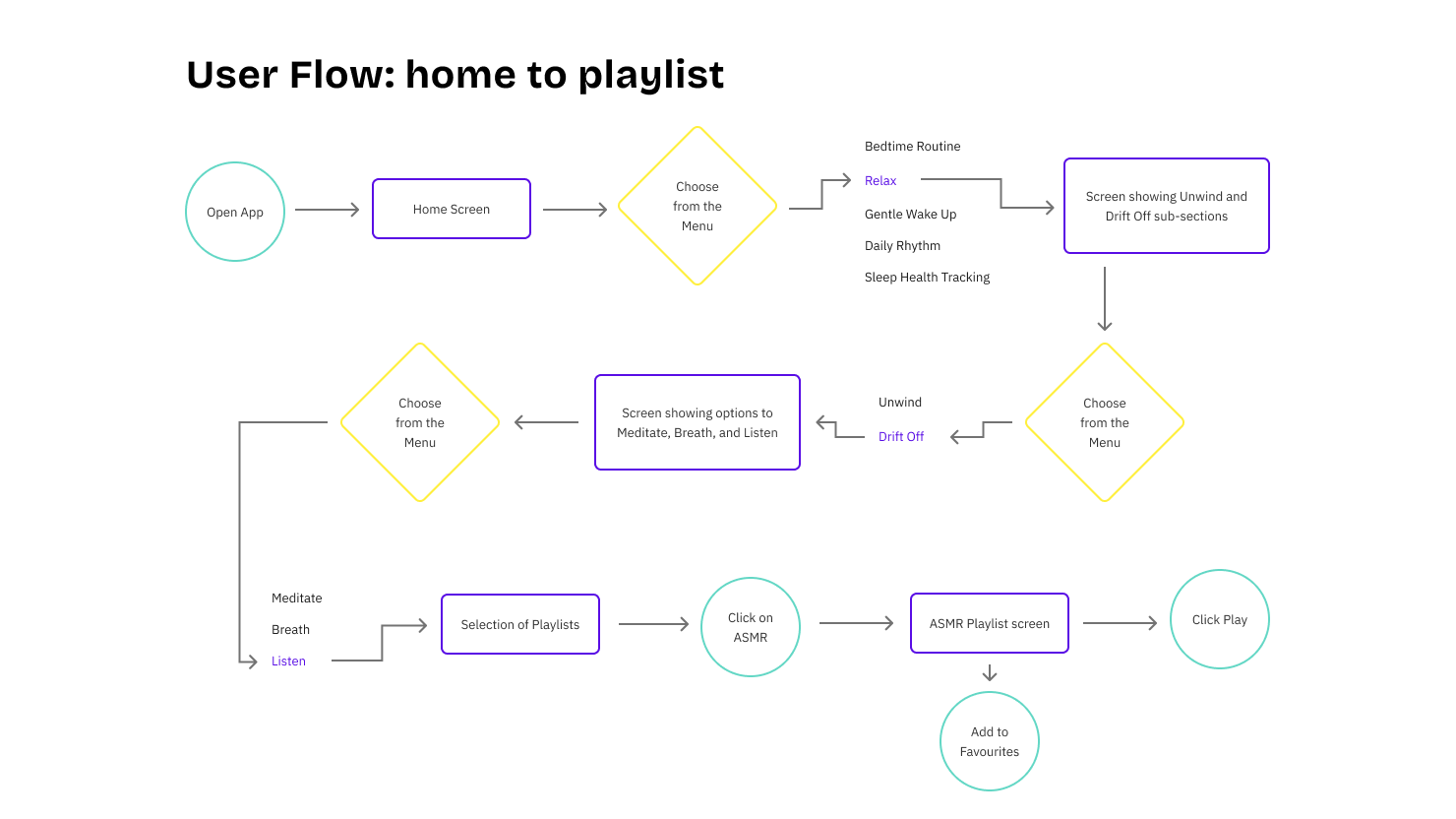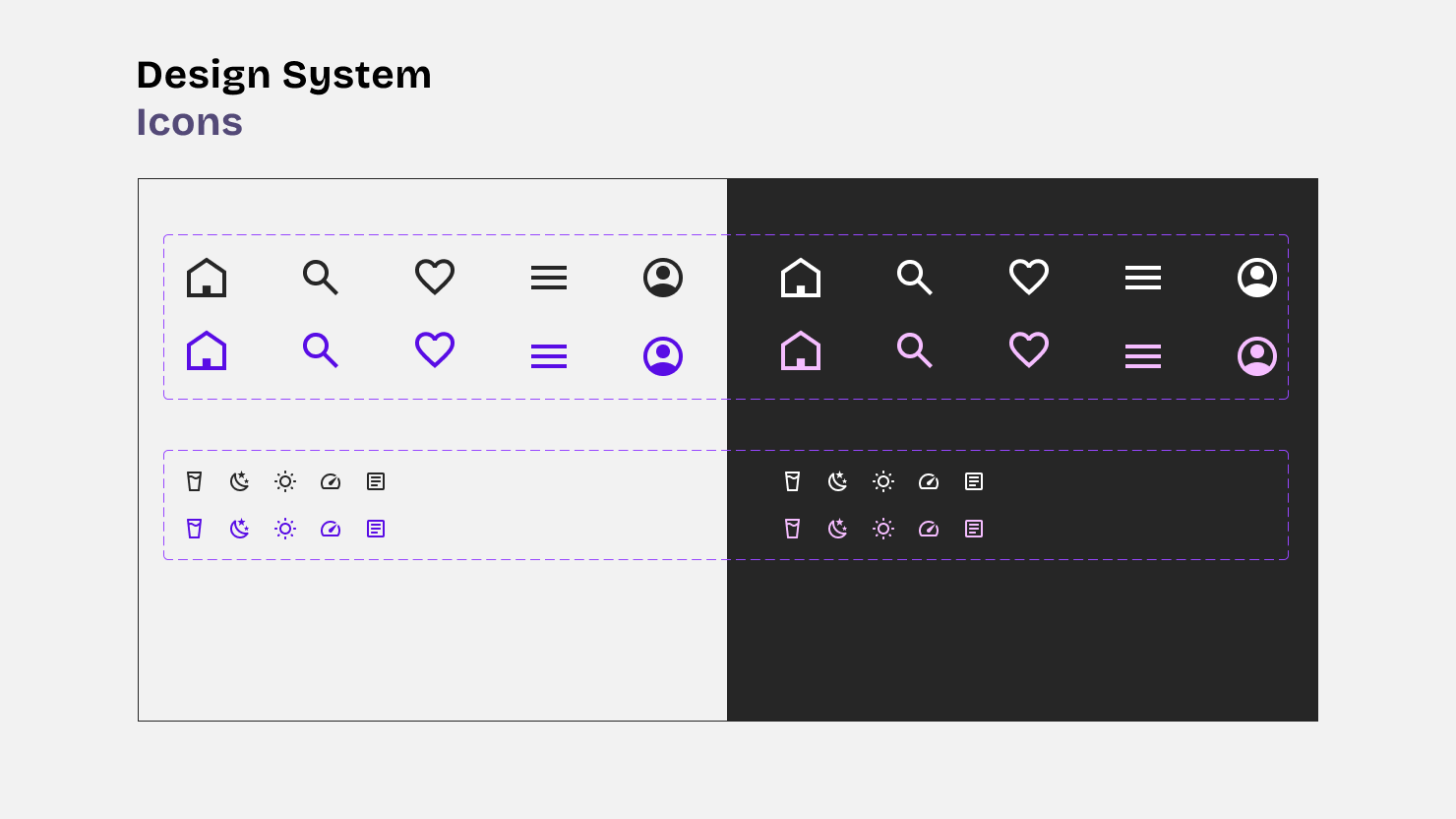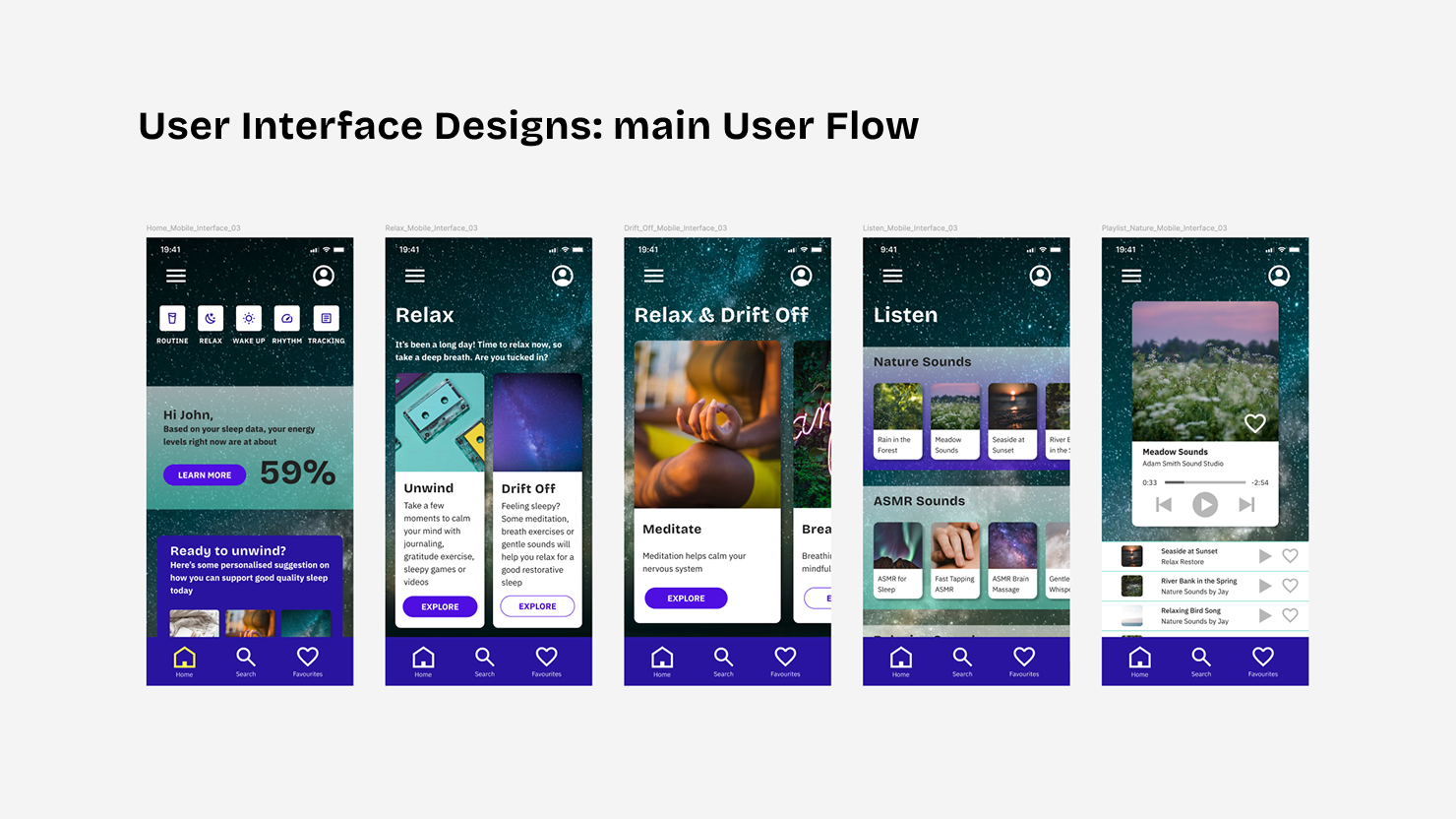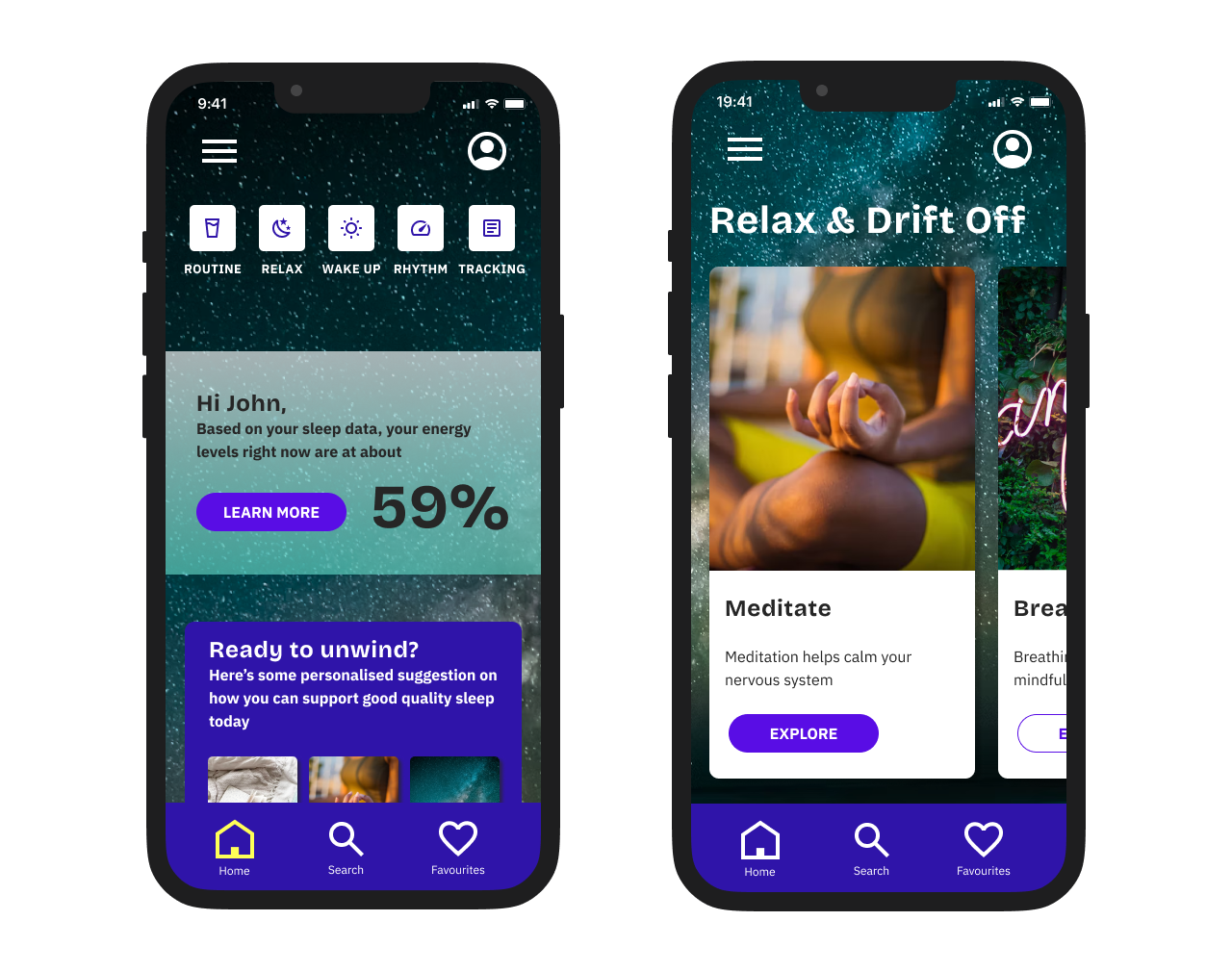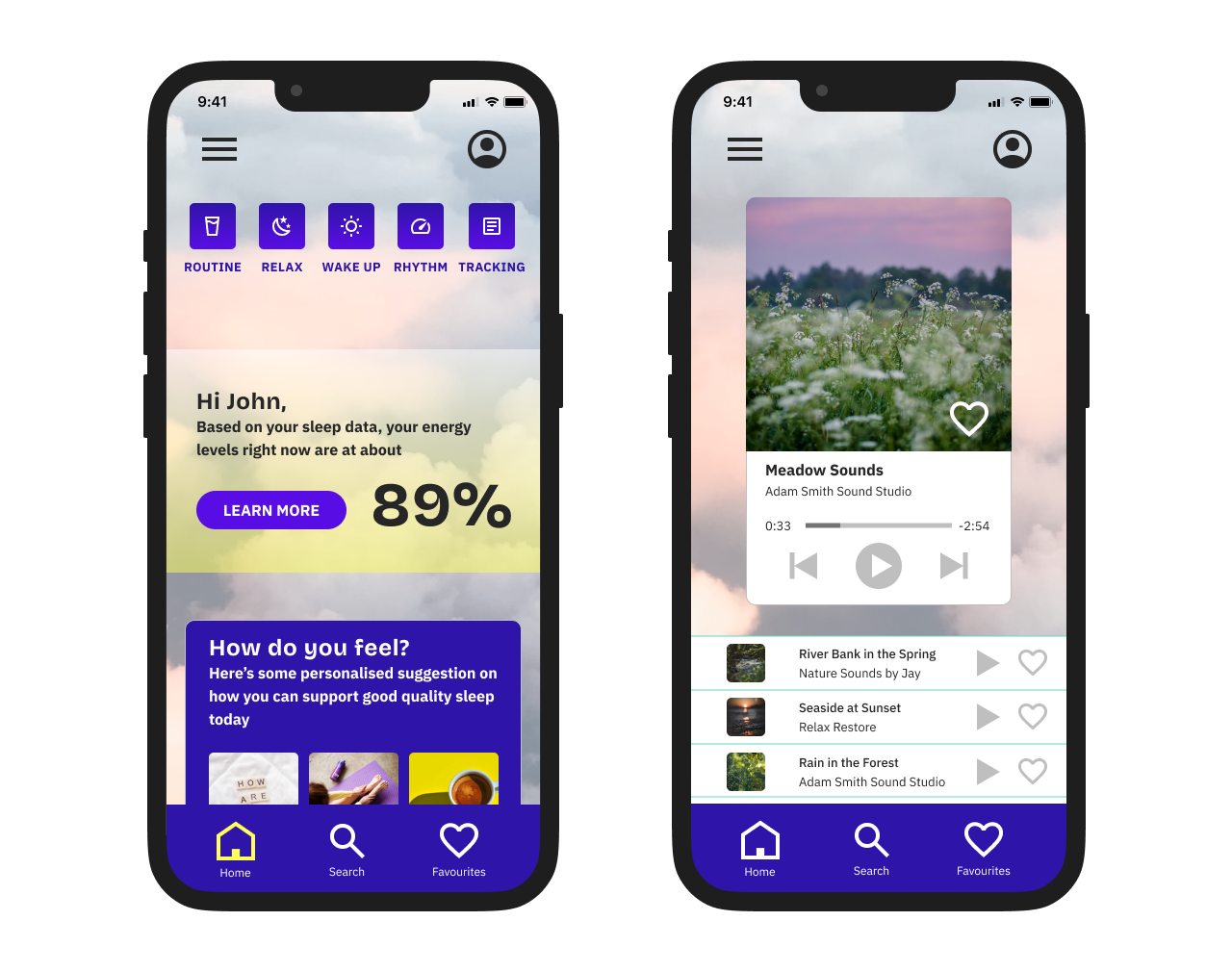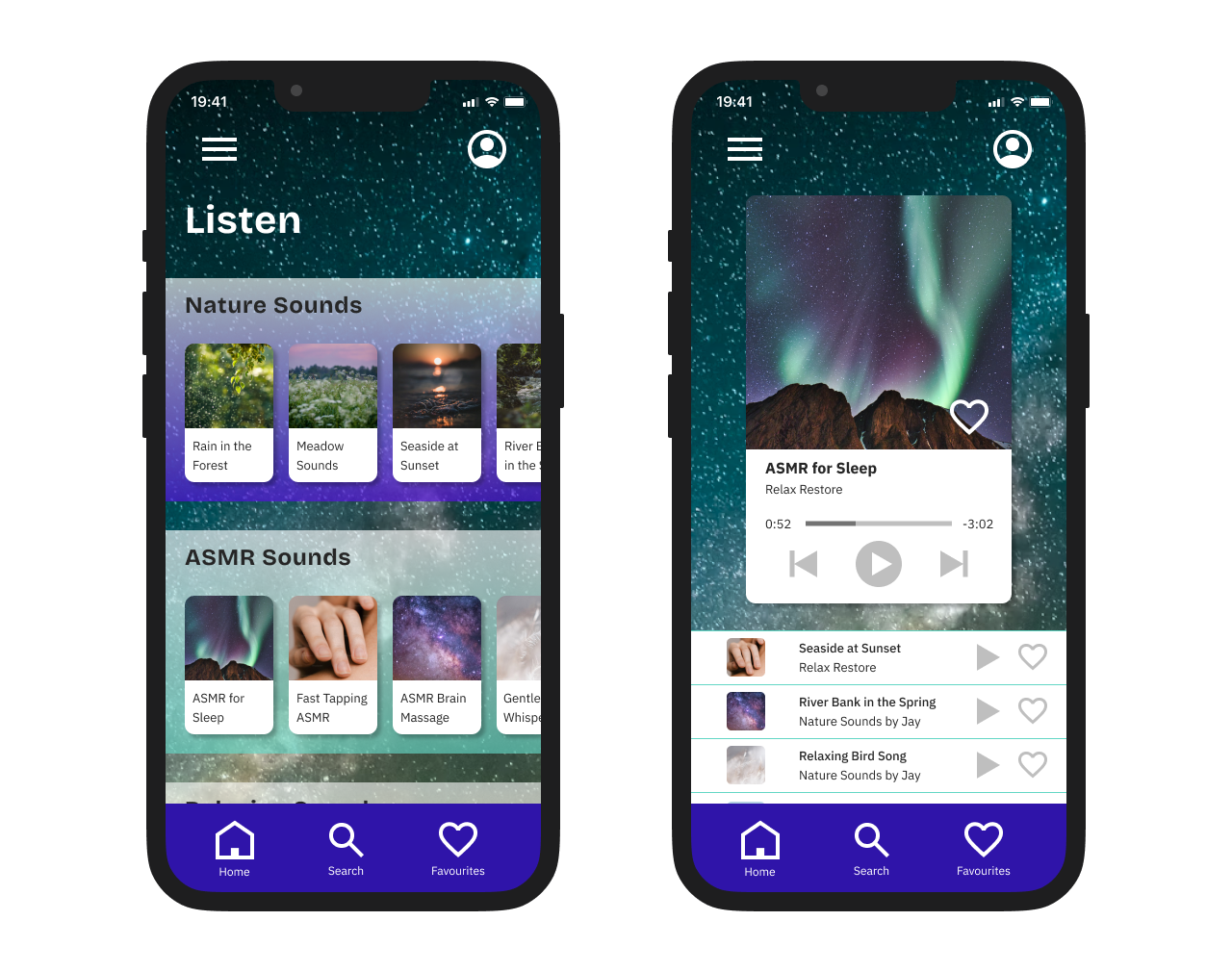Arise, your personal sleep coach app
Arise is designed to help young professionals and students reach their sleep goals. The app supports sleep health by tracking sleep and providing tailored content. Although the initial concept was a simple tracker, user interviews revealed that the target audience actually wanted a personalised sleep coach.
The design process quickly pivoted to deliver a holistic sleep coaching experience, requiring a focus on personalisation and science-based features. The project length was six weeks, focusing on UX research, followed by UX and UI design using Figma.
Explore the design process and one chosen user flow below. You can also play with the interactive prototype for this flow: from the home screen all the way to the playlists and the player. Enjoy!
Type of project
Bootcamp assignment
Length
6 weeks
Role
UX research, UX and UI design
Tools
Figma
-
The original design brief for the Arise app specified the creation of a sleep tracker. However, detailed user interviews conducted with the target audience—young professionals and students—revealed a critical need: these users articulated that they did not want a passive tracker; instead, they required a more active, personalised sleep coach. The core challenge was therefore to redefine the project's scope, moving away from a basic tracker to develop a holistic app that could actively help users build better routines supporting their sleep health.
-
The solution involved evolving the app into a comprehensive coaching platform based on three main design principles: the app must act like a sleep coach, it must be easy to personalise, and it must be science based. This strategic shift necessitated developing a robust Information Architecture (IA) designed to guide the user through their entire 24-hour cycle of wakefulness and sleep. This IA included sections such as Bedtime Routine, Relax, Gentle Wake Up, Daily Rhythm, and Sleep Health Tracking.
Furthermore, the solution had to account for users’ potential vulnerability when sleep deprived. In defining the longest User Flow, the decision was made to present fewer options at once to successfully lower the cognitive load. This design choice, guided by Hick’s Law, would allow users to relax better.
-
The project went through the whole design process, starting with initial research, proceeding through the define phase, ideating, and designing the final product, while incorporating user feedback and testing at various stages.
The Empathise phase involved detailed Competitor Analysis, comparing both direct and indirect mobile apps based on quantitative data (pricing, rating) and qualitative data (features and user feedback). This was summarised in a SWOT analysis format to identify a market niche. Simultaneously, User Interviews were conducted to gather information about the target audience’s sleep quality, habits, challenges, and expectations. This research informed the creation of User Personas, highlighting similarities and competing needs. A User Journey was also mapped for a competitor’s product (Calm) to pre-empt potential pitfalls.
In the Define phase, User Research Analysis confirmed that users needed a holistic app. Affinity Mapping was used to gather feature ideas and build a first draft of the IA, guided by the three main design principles (coach, personalization, science-based). This IA draft was subjected to User Testing, which helped shape the final look, feel, and tone of voice for the app. The final Information Architecture was designed to guide users through their 24-hour cycle, covering Bedtime Routine, Relax, Gentle Wake Up, Daily Rhythm, and Sleep Health Tracking. When defining the longest User Flow, the decision was made, guided by Hick’s Law, to choose fewer options shown at once to lower the cognitive load and allow users to relax better.
The Ideate phase began with Lo-fi Wireframes, utilizing the Crazy Eights method to generate eight design ideas in eight minutes, before selecting the best design to explore further. These were then translated into Mid-fidelity Wireframes in greyscale in Figma, allowing for better scaling and copy integration. Finally, the wireframes were checked for consistency and accessibility before colour was applied. During this time, the Design System was developed, defining the colour palette using the Arise brand colours and setting up the typography.
The Prototype phase included finalizing the Design System, creating Icons and Components, developing the User Interface Designs, and culminating in the creation of an interactive prototype demonstrating a user flow from the home screen to the playlists and the player.
-
The resulting product, Arise, successfully addressed the critical user need by functioning as a personalised sleep coach rather than a simple tracker.
The application’s impact is defined by its comprehensive, routine-building support. The core structure ensures users are guided through every stage of their 24-hour daily rhythm, starting with the Bedtime Routine, moving through Relax and Gentle Wake Up, and allowing access to Sleep Health Tracking. Crucially, the UI design choices prioritised user experience and relaxation; by applying Hick’s Law in the user flow design, the interface presents fewer options at once, which successfully lowered cognitive load and confusion for the user. The final delivery included a comprehensive Design System and an interactive prototype showcasing the seamless user experience.










